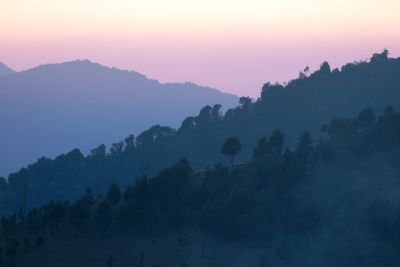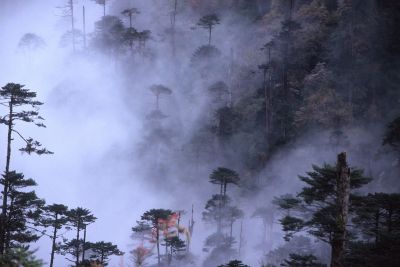Arunachal Pradesh
General information
In addition to its cultural and ethnic diversity, the greatest wealth of this remote region, which is largely undeveloped for vehicles, are the untouched tropical and subtropical rainforests and cloud forests with their typical flora and fauna. The cloud forests are among the most endangered ecosystems on earth, which makes a vacation here something absolutely unique and very special, and not just for ornithologists and botanists. Arunachal Pradesh offers real nature enthusiasts an unforgettable immersion in pristine wilderness and a tingling touch of adventure – the colorful, lively life in the few towns is also an impressive experience. For example, in the far west, where the mountain climate is quite mild, the 400 year old Buddhist monastery Galden Namgyal Lahtse invites you to visit the birthplace of the 6th Dalai Lama.
The small town of Tawang, which today gives its name to the entire district, developed and grew around this monastery. The Monpa (also known as Menba, Monba or Moinba), an indigenous people of the region who were separated into two cultures when the borders between China and India were closed, mainly live here. In no other state in India is the fine balance between progress and the preservation of traditional roots as visible as it is here.
The land of Arunachal Pradesh strikes the visitor as mysterious, powerful and beautiful – but also dramatic and is forever changing. How much longer will the forests on the mountain slopes retain their original biodiversity despite being used for forestry? Will the population be able to continue to live together peacefully despite all their differences and the claim to the country’s territory by both India and China or the Autonomous Republic of Tibet?
We look forward to crossing the bridge with you to the land where the Indian sun first rises. You can expect a pleasant, temperate to tropical climate, exuberant, pristine nature and easy-going, humble people whose hospitality will enchant you. If you are prepared to accept compromises in terms of comfort, accommodation and, in remote areas, hygiene standards and can flexibly adapt the details of your tour to the local conditions on the day, Arunachal Pradesh will reward you with an incomparable adventure vacation away from the tourist crowds, with enriching encounters with indigenous peoples and an experience of nature that is only possible in this pristine state in very few regions of the world.
















